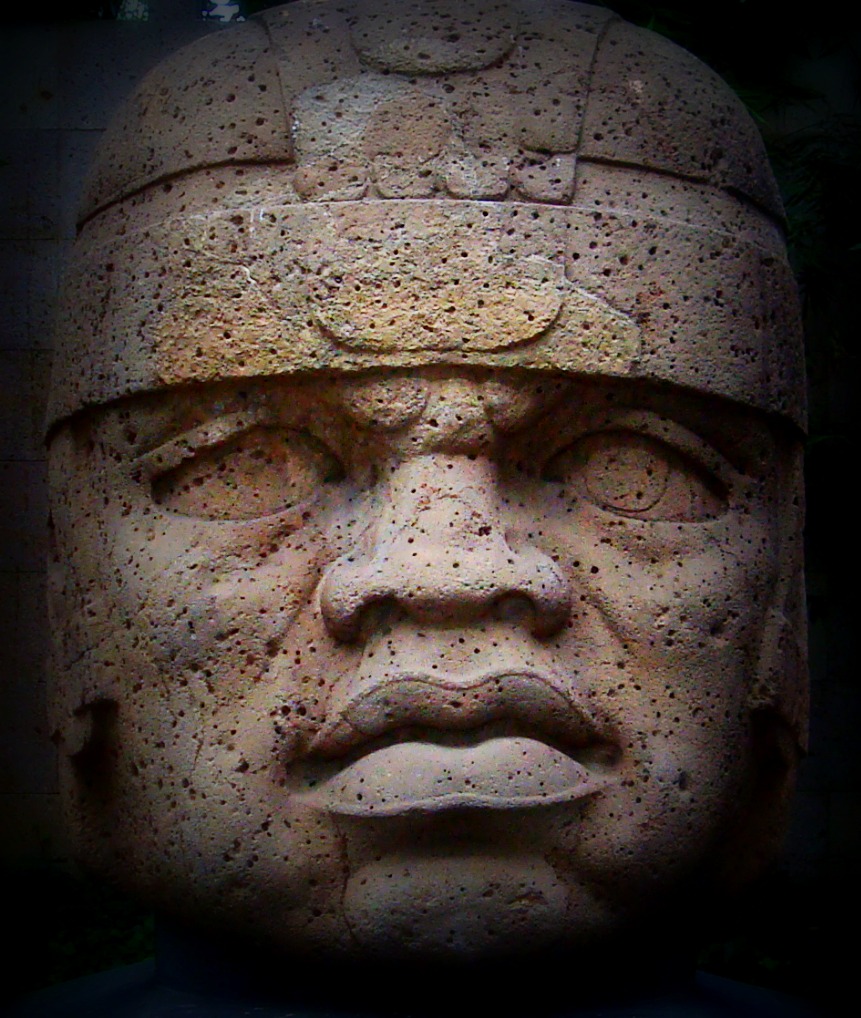Skemax - The Forgotten Faces
As suddenly as a summer storm sweeping across the plains, giants rise out of the land, towering over the sweetgrass sea as if to reach and touch the sky. Only their heads are visible, crowned with elaborate jewels and beads, and their faces bear countenances of wisdom and compassion, gazing not at the sky but down upon those who dare to tread among them. They rise at least 1,000 feet high, carved out of the top of what was once a single, enormous butte that somehow grew out of the bedrock that holds the Sakakuisy. According to some, the ancient name of this place is Skemax, meaning "sky table" in the old Muyska language. We have no way of verifying this claim, and until the Tribes claimed it as their own, it was known more generally as The Forgotten Faces. The Tribes themselves hold this to be the most sacred site in the world and have named it Shampo Aaooeeinaa in their own language, meaning Guardians of the Sky. While the Tribes have their stories about the origins and purpose of the monument, scientifically speaking we know very little.
Purpose / Function
Assumed to have been created by the Muka thousands of years ago, almost nothing is known about the purpose of the monument. Why were the faces carved here, in the middle of an ocean of grass? Who do they represent? What was the site used for once its creation was complete?
The United Tribes of the Gueta Ko believe the carvings contain the sacred voices of their ancestors, the voices that called them into the Sakakuisy and those that continue to guide them. They use the monument as the gathering place for their United Tribal Council, where the twenty Eipaa come together to speak with one another and to hear the wisdom of the ancestors and the moon mother, Ooauu Eipaa. They gather within the circle of these heavy gazes under the light of a full moon, opening themselves - and in extension, their tribes - to the judgment and guidance of the sky.
Alterations
The site is extremely sacred to the Tribes of the Gueta Ko and any sort of alteration is strictly forbidden. They have created areas for camps to be setup around the base of the structure and the entire area is kept clear of debris by the Uru tribe who manage the area that contains the monument. Other than this, nothing has been done to either change or repair the monument.
Architecture
Carved from a single giant butte composed of magmatic rock, the monument is varying shades of brown and light-gray, scattered with crystals of white feldspar that sparkle and flash in both sunlight and moonlight. There are twelve heads in total - six on either side, forming an open U shape with an entrance between two of the heads at the bottom of the U and the sheer cliff of the butte falling of abruptly at the opposite end and around the edges. A well-worn path that has seen the feet of thousands of pilgrims leads the way up from the base of the butte, a fairly steep ascent of a couple hundred feet. The two faces that form the entryway of the monument are visible for the entire climb, and it is a heavy gaze that follows those who ascend, creating an atmosphere both solemn and holy.
History
The history of the monument is unknown. However, for a description of its current use, it is best to turn to the words of the Bramin anthropologist, Anyma Sim:
It is the 25th of Suezho, early spring, and the air is crisp and clear. We begin our climb at twilight, matching the pace of our ascent to that of the rising moon, full and bright in a purple and blue sky. We carry no torches nor lanterns, depending only on Ooauu Eipaa, the Moon Mother, to guide our feet on the well-worn path. As my eyes adjust to the dim light of dusk, I raise my head and encounter the eyes of giants, watching my climb intently, their deep-set gaze heavy and silent. I am not frightened - their countenance is not stern, but rather gentle, almost amused from a certain angle, concerned from another. I am filled with the energy of anticipation, bouncing on the balls of my feet like a komy bird as it follows its prey, but that energy dissipates like embers in the wind under the now-visible blanket of stars and the wise gaze of these enormous guardians. As we reach the top of the path, I am calm, ready to enter into this sacred place. Standing outside the ring of statues, we remove our sandals. A single voice begins singing, a low and slow song that I later learn is a request for permission to enter. The Gueta Ko do not bow or prostrate themselves during ritual; it is the sky that they worship, and so, we throw back our heads and raise our arms, offering ourselves, body and soul, to Ooauu Eipaa and to the great ancestors of the stars, offering ourselves to the stone faces looming before us. Now, the single voice is joined by others. Now, the drummers begin their steady, insistent rhythm. Now, filled with moonlight and stardust, open to hear the voices of the ancestors, we move on bare feet, singing our song of supplication, into the embrace of the great Shampo.
RUINED STRUCTURE
unknown
unknown
Founding Date
unknown
Alternative Names
Shampo Aaooeeinaa - Guardians of the Sky
Type
World wonder
Parent Location
Those outside the Tribes have very little interest in the monument, and the Uru tribe is very careful about who they allow to approach it. For most within the Tribes, it is considered a place of pilgrimage, a sacred site to see at least once in a lifetime. Each time the United Tribal Council meets, a retinue is chosen from within each tribe to escort their Eipaa to the site. Each time the Council meets, different companions are chosen. In this way, most Gueta Ko are able to experience Shampo Aaooeeinaa at some point in their life.
For more information on the Gueta Ko, please read Anyma Sim's seminal work, The Island and Its Inhabitants.






Comments